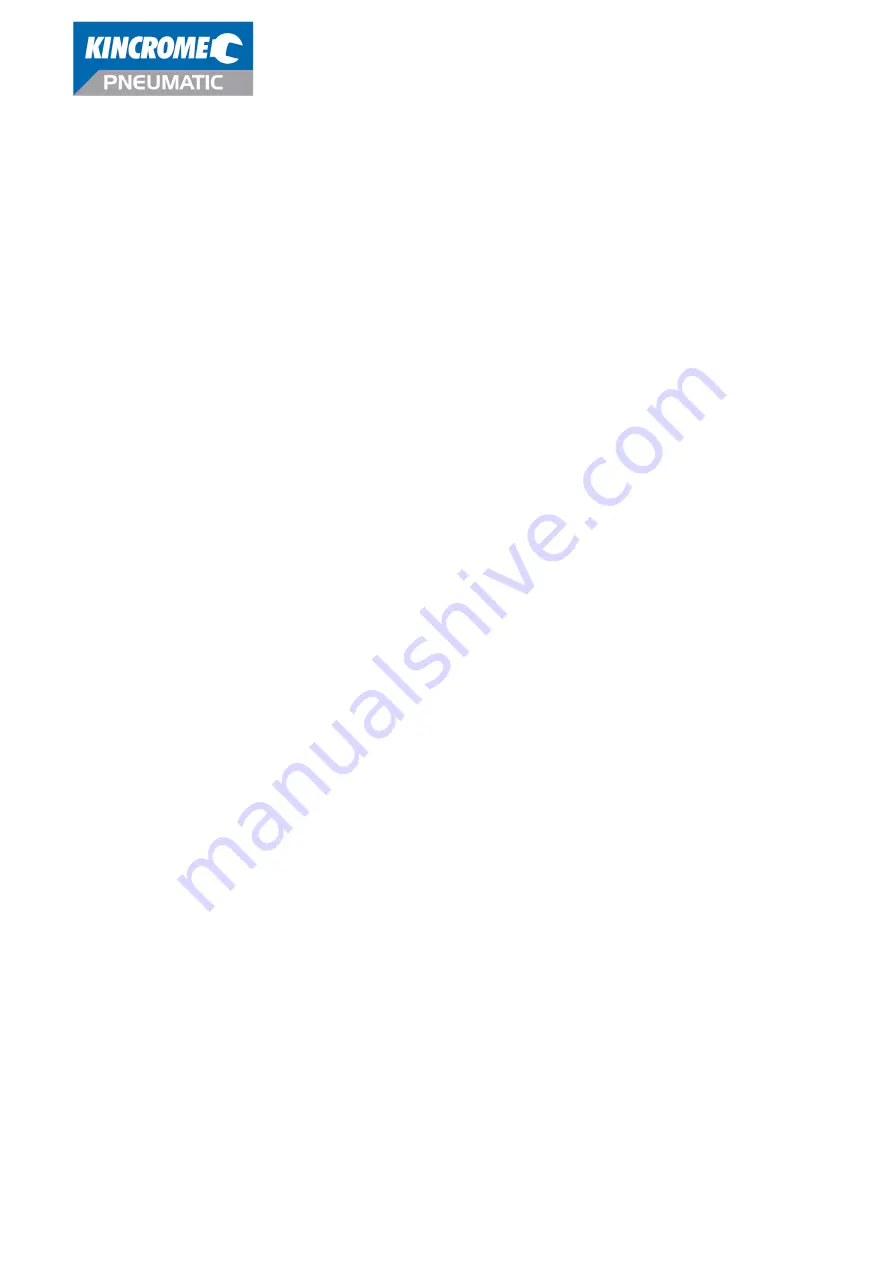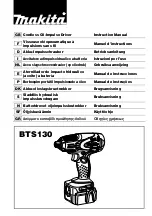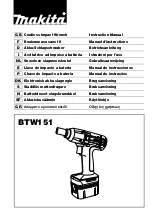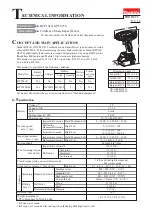
4.6 When not in use air tools should be stored in a safe place.
4.7 Use the right air tool for the job.
Do not force small air tools to do the job of a heavy-duty tool.
Do not use an air tool for a purpose for which it was not intended.
4.8 Never force air tools, it will do the job better and safer at the rate for which it was intended.
4.9 Personal protection
Always wear approved safety goggles.
Always wear ear protection at environment noise levels > 85dB(A) due to risk of impaired hearing.
Do not wear loose clothing or jewelry as they can be caught in moving parts.
Wear protective hair covering to contain long hair.
Rubber gloves and non-skid footwear are recommended when working outdoors or greasy floors
4.10 Do not over reach keep proper footing and balance at all times.
4.11 Use clamps or a vice to hold work piece in place. It is safer than using your hand and keeps
both hands free to operate the air tool.
4.12 When not in use and before performing any service or changing accessories,
ensure air tool is disconnected.
4.13 Maintenance and care
Keep air tools clean and oiled for best and safest performance.
Follow instructions for lubricating and changing accessories.
Cleaning rags and other flammable waste materials must be kept in a tightly closed metal container
and disposed of in the proper fashion. Keep handles dry, clean and free from oil and grease.
4.14 Avoid unintentional starting.
Do not carry connected air tool with your finger on the trigger. Be sure switch is in the "OFF" position
when connecting to air supply.
4.15 At all times stay alert, watch what you are doing and be constantly aware of your working environment.
4.16 Service and Repairs.
This air tool complies with the relevant safety regulations.
It does not have any user serviceable parts.
Repairs should only be carried out by our
authorized service centers.
Non compliance with this clause will void any warranty applicable and may expose the user
to personal injury.
Warning risk of Injury
Do not use air tools in potentially explosive atmospheres such as in the presence of flammable
liquids, cleaning solvents or gases. Poor quality or damaged tools such as sockets can fly apart
during operation, propelling particles throughout the work area. Keep hands away from moving parts
such as nut runner sockets and running tools. Uncontrolled movement of air hose may occur if it
breaks up or becomes loose. Unexpected direction of insert tool movement can cause a hazardous situation.
The tool or insert tool such as socket may crush by natural worn material and the work piece.
Never wear loose fitting clothes or apparel which contains loose straps or ties, etc. which can be
caught in the rotating spindle of the air tools.
5. Putting Into operation
5.1 Air supply and connections.
Only use filtered, lubricated and regulated compressed air.
The following illustration shows the correct mode of connection to the air supply system which
will increase the efficiency and useful life of the tool.






















